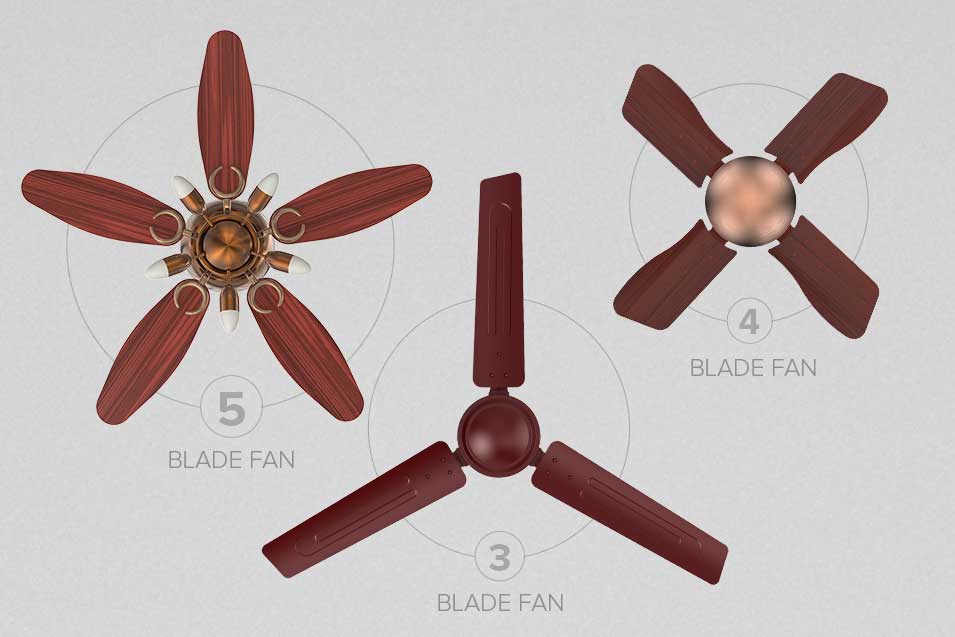
How Many Blades Should Your Ceiling Fan Have?
Introduction
Fans are an indispensable part of our daily lives, providing much-needed relief from the heat and aiding in air circulation within indoor spaces. The design of a fan, particularly the number of blades, plays a significant role in its performance and overall user experience. Traditionally, fans came with three to four blades, but modern designs have seen an increase in the number of blades, with some models boasting up to five or more. This shift begs the question: How many blades are best on a fan?
Optimal Number of Blades
The answer to the optimal number of blades on a fan is not straightforward and depends on several factors. Here, we delve into the advantages and disadvantages of different blade counts to determine what might work best under various circumstances.
- Fans with Three to Four Blades: Fans with three to four blades are commonly found and are known for their balance between efficiency and noise levels. However, it is subjective based on the RPM (rotations per minute) that make a ceiling fan noisy. Do make sure to check that before making your pick for a ceiling fan.
A lesser number of blades reduces drag, allowing the fan to operate at higher speeds with less noise. This makes them ideal for environments where noise is a concern, such as bedrooms or study rooms. Additionally, fans with fewer blades tend to have a more traditional or minimalistic look, appealing to certain aesthetic preferences. - Fans with Five or More Blades: Fans with five or more blades are designed with an emphasis on maximizing air flow and creating a more uniform air distribution. These fans are often quieter at lower speeds, making them suitable for areas where gentle air circulation is desired without the distraction of noise, such as living rooms. However, more blades can increase the speed and may cause them to make noise. It is then advisable to check its RPM and blade angle for higher air delivery and lower noise.
- Energy Efficiency and Aesthetics: Energy efficiency is another critical factor to consider. Generally, fans with fewer blades require less energy to rotate, translating to lower electricity consumption. However, advancements in motor technology and blade design have minimized these differences, making even fans with higher blade counts relatively energy efficient.
Aesthetics also play a significant role in the decision-making process. The design of the fan should complement the room’s decor. Fans with more blades often have a more modern or luxurious appearance, while those with fewer blades tend to lean towards a classic or industrial style.
Conclusion:
In conclusion, the best number of blades on a fan depends on the specific needs and preferences of the user. For those prioritizing energy efficiency and a traditional aesthetic, fans with three to four blades are ideal. On the other hand, if the goal is to achieve quiet operation and a modern look, opting for a fan with five or more blades may be the way to go. Regardless of the number of blades, it’s important to consider the quality of the fan, including its motor and overall build, to ensure optimal performance and longevity. Ultimately, the choice of fan should harmonize with both the functional requirements and the aesthetic sensibilities of the space it occupies, ensuring comfort and style go hand in hand.
Also Read: How to Select the Right Sized Ceiling Fan for Your Space
Frequently Asked Questions (FAQs) :
Q1. Are ceiling fans with odd numbers of blades more efficient?
Yes, ceiling fans with odd numbers of blades, like three or five, are often more efficient. This design can lead to smoother operation and less noise, which in turn, may slightly improve airflow and energy efficiency. The balance and aerodynamics of odd-numbered blades help in reducing drag, making these fans a smart choice for both performance and energy savings.
Q2. Will a three-blade ceiling fan be sufficient for a small bedroom?
Absolutely! A three-blade ceiling fan is ideal for a small bedroom. It’s designed to be efficient, offering enough airflow to keep the room comfortable without overwhelming the space. These fans are also known for their sleek and modern appearance, making them a great addition to any small room where space and aesthetics are important considerations.
Q3. Is it essential to match the number of blades with the room’s décor?
While the design of a ceiling fan, including the number of blades, can contribute to the overall look and feel of a room, it’s not essential to match the number of blades with the room’s décor. The choice should primarily focus on your personal style preferences and the functional needs of the space. Whether you prefer a minimalist design with fewer blades or a more traditional look with more blades, the key is to choose a fan that you love and that meets your cooling requirements. Comfort, functionality, and personal taste should guide your decision.

